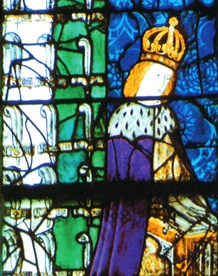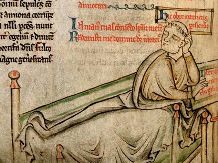Medieval Sources (500-1500AD)
Introduction
The medieval period in Britain followed the collapse of the Roman Empire, and is roughly equivalent to the period from the Northern and Southern dynasties to the mid Ming Dynasty in China.
The first five centuries of the medieval period saw the evolution of several small kingdoms within England, Ireland, Scotland and Wales under a number of different ruling dynasties and peoples from the British Isles, continental Europe and Scandinavia.
By 1000 two larger kingdoms of England and Scotland had emerged. The invasion of William the Conqueror in 1066 was the last successful invasion from overseas, and this was followed by a period of consolidation and the strengthening and development of royal government in England over the next four centuries. The new Anglo-Norman dynasty also extended its authority over Wales and Ireland, but Scotland remained an independent kingdom throughout the medieval period.
Britain is rich in surviving source material from this later period, including the abundant administrative records of central and local government, the Church, and individual landowners. Literacy developed in a number of different languages. The most frequently encountered are Latin, French and various forms of English. However varieties of Gaelic and Welsh were also used in Ireland, Scotland, the Isle of Man and Wales.
Many projects in recent years have resulted in the digitisation of selections of these administrative and literary sources which have been made available online so that historians everywhere can access them.
Click on the resources below to find out more and access the sources
Anglo-American Legal Tradition
Anglo-Norman Online Hub
British History Online
British Library Online Resources
Calendar of Patent Rolls
Camelot Project
Cause Papers in the Diocesan Courts of the Archbishopric of York, 1300-1858
Corpus of Anglo Saxon Stone Sculpture
Corpus of Romanesque Sculpture in Britain and Ireland
Corpus Vitrearum Medii Aevi: Medieval Stained Glass in Great Britain
Database of Middle English Romance
England’s Immigrants 1330-1550: Resident Aliens in the Late Middle Ages
Fathers of the Church
Fine Rolls of Henry III 1216-1272
The Gascon Rolls Project (1317-1468)
Internet Archive: Text Archive
Internet Medieval Sourcebook
Late Medieval English Scribes
Mapping the Medieval Countryside
The Medieval Bestiary: Animals in the Middle Ages
Medieval Resources Online
Medieval Wall Painting in the English Parish Church
Middle English Compendium
Norfolk Medieval Graffiti Project
The Online Froissart
Patrologia Latina
Prosopography of Anglo-Saxon England
Records of the Parliaments of Scotland to 1707
Soldiers of Medieval England Database 1369-1453


